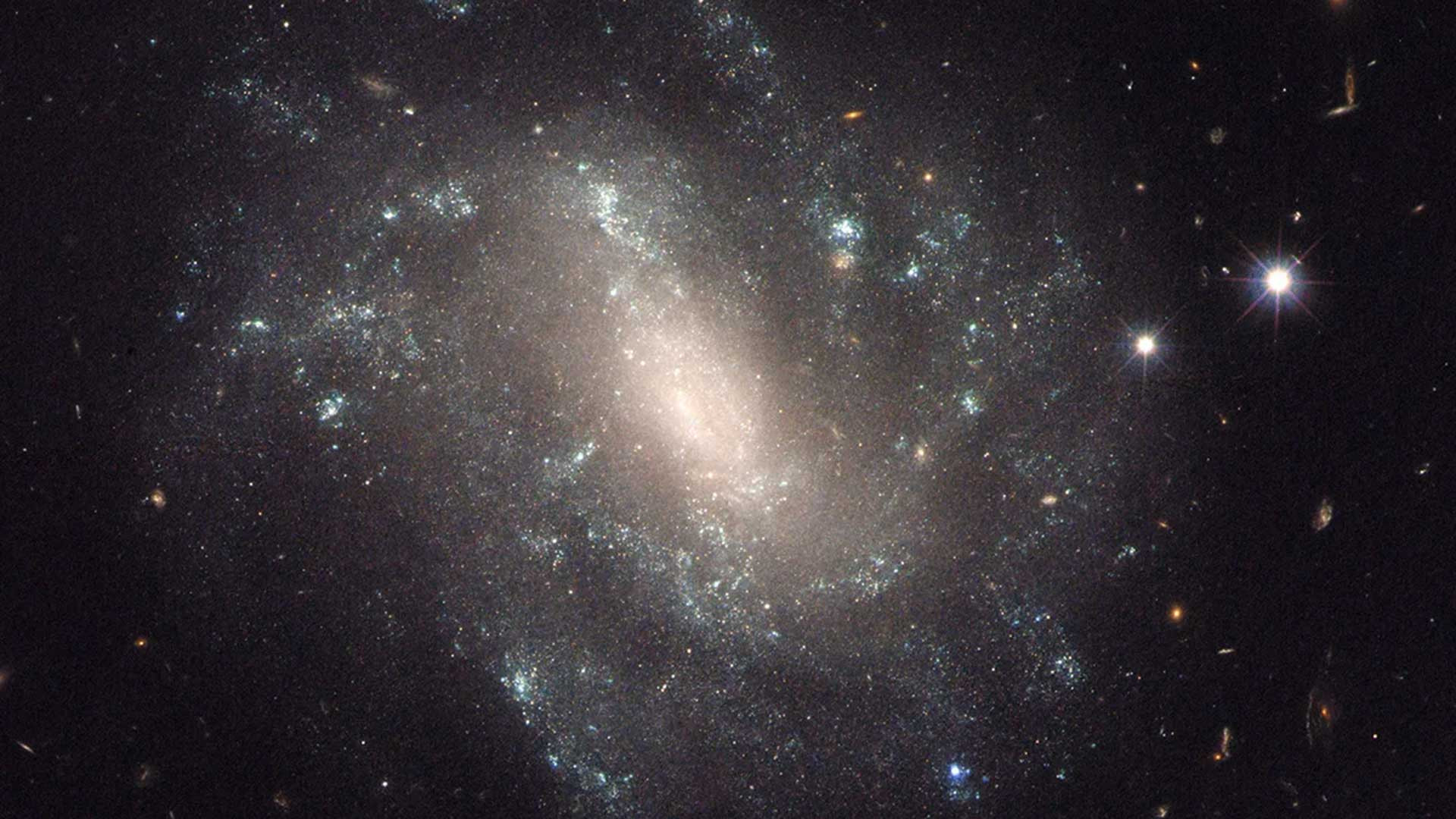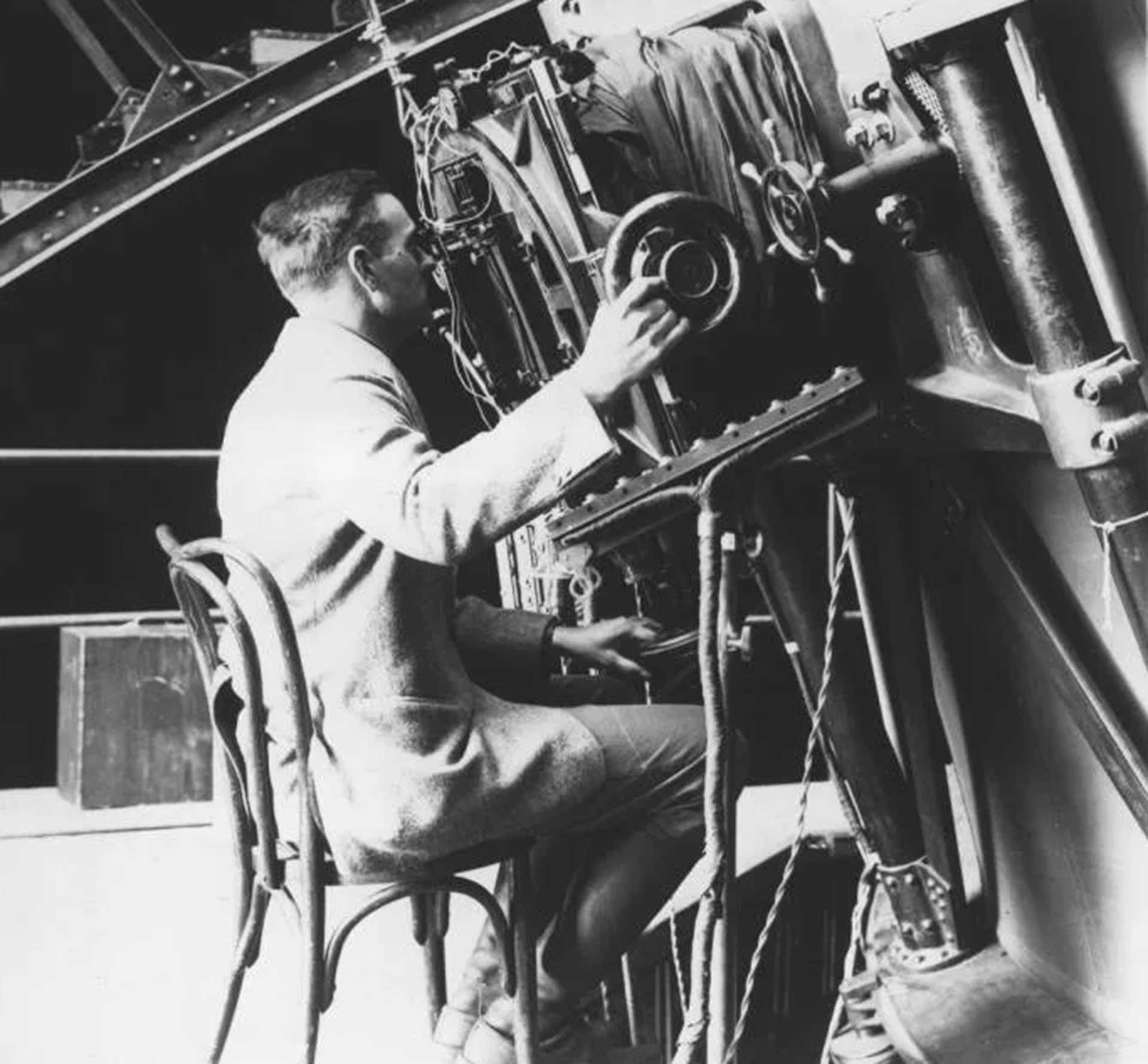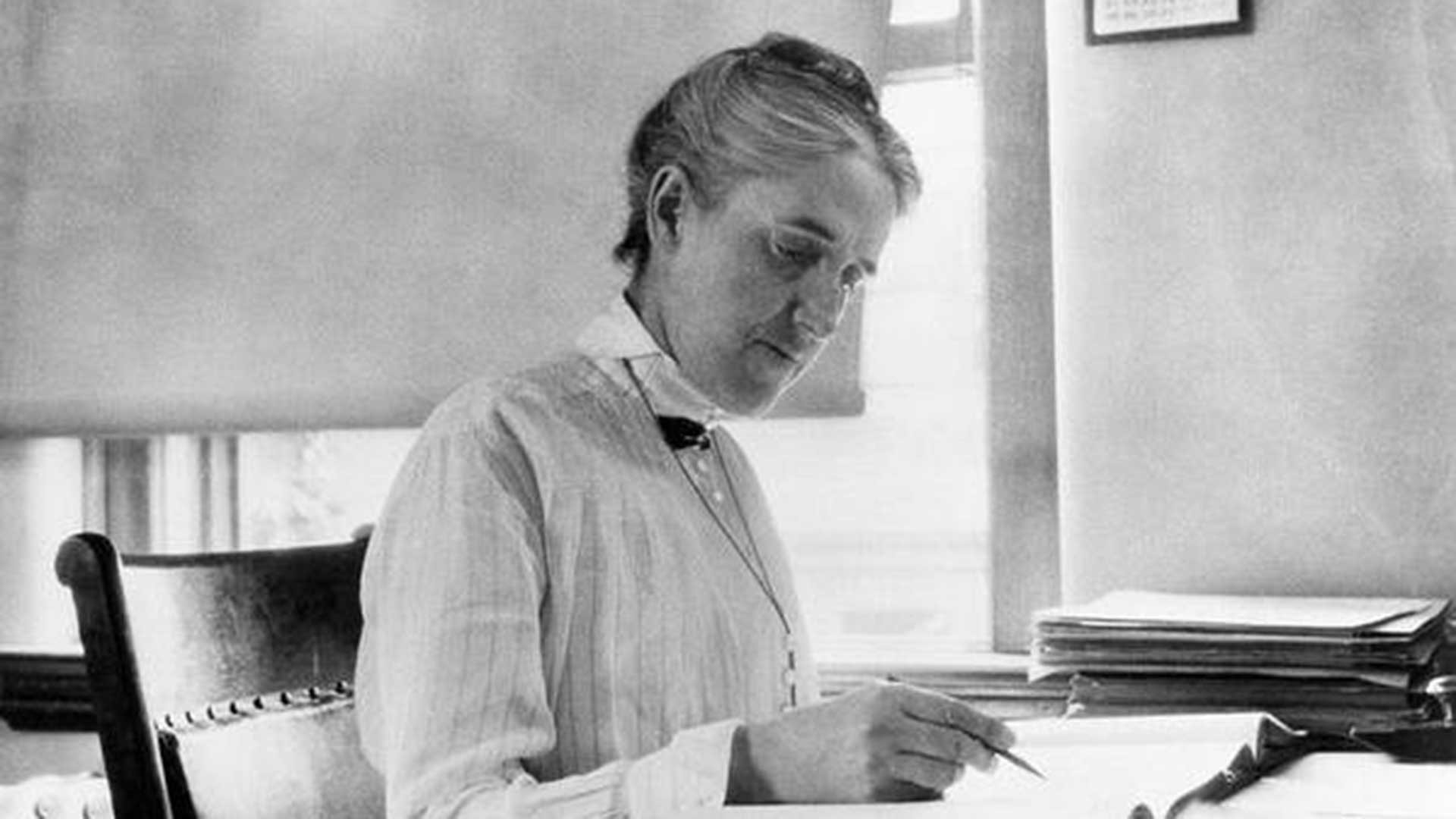Contents
In the late 1920s, astronomer Edwin Hubble made a groundbreaking discovery that revolutionized our understanding of the cosmos: the universe is expanding. Using a powerful telescope at Mount Wilson Observatory, Hubble observed distant galaxies and found a correlation between their distance and the speed at which they are moving away from us. This observation, built upon the work of other scientists, provided compelling evidence for an expanding universe.
 An image taken by the Hubble Space Telescope capturing a galaxy.
An image taken by the Hubble Space Telescope capturing a galaxy.
The Great Debate: Beyond the Milky Way
 Edwin Hubble seated at the 100-inch reflecting telescope at the Mount Wilson Observatory in California.
Edwin Hubble seated at the 100-inch reflecting telescope at the Mount Wilson Observatory in California.
Hubble’s arrival at Mount Wilson Observatory in 1919 coincided with a period of intense debate within the astronomical community. The existence of galaxies beyond our own Milky Way was a contentious topic. The “Great Debate” of 1920 between astronomers Harlow Shapley and Heber Curtis epitomized this disagreement. Shapley believed the Milky Way encompassed the entire universe, while Curtis argued for the existence of separate “island universes.” Hubble aimed to resolve this debate by studying the Andromeda “nebula,” a fuzzy patch of light thought by some to be within our galaxy.
Henrietta Leavitt’s Crucial Contribution: Cepheid Variables
 Alt text: Henrietta Swan Leavitt, whose work on Cepheid variables was essential for Hubble’s discovery of the expanding universe.
Alt text: Henrietta Swan Leavitt, whose work on Cepheid variables was essential for Hubble’s discovery of the expanding universe.
Hubble’s work relied on the groundbreaking research of Henrietta Swan Leavitt. Leavitt studied Cepheid variables, a type of star whose brightness pulsates regularly. She discovered a crucial relationship: the period of a Cepheid’s pulsation is directly related to its intrinsic luminosity. This meant that by observing a Cepheid’s pulsation period, astronomers could determine its true brightness and, by comparing that to its apparent brightness, calculate its distance. This provided Hubble with the “standard candle” he needed to measure the distance to Andromeda.
Measuring the Distance to Andromeda and Beyond
In 1923, Hubble identified Cepheid variables within the Andromeda nebula. Using Leavitt’s Law, he calculated its distance to be nearly one million light-years, far beyond the estimated size of the Milky Way. This discovery conclusively proved that Andromeda was a separate galaxy, settling the Great Debate and opening up the vastness of the extragalactic realm.
Redshift and the Expanding Universe
Alt text: Representation of the redshift phenomenon, where light from receding objects is stretched, shifting towards the red end of the spectrum.
Hubble then turned his attention to the work of Vesto Slipher, who had observed that the light from many nebulae was redshifted. Redshift is a phenomenon where light waves are stretched, shifting towards the red end of the spectrum, indicating that the source is moving away from the observer. This is analogous to the Doppler effect with sound waves, where the pitch of a siren drops as it moves away. Slipher’s observations hinted at the possibility of an expanding universe.
The Velocity-Distance Relationship
Collaborating with Milton Humason, Hubble meticulously measured the distances and redshifts of numerous galaxies. In 1929, he published his findings, revealing a linear relationship between a galaxy’s distance and its velocity. This became known as Hubble’s Law, which states that the farther away a galaxy is, the faster it is receding from us. This provided strong evidence for an expanding universe.
Hubble’s Enduring Legacy
While Hubble’s initial calculations of the Hubble constant and the distance to Andromeda were later refined, his fundamental discovery of the expanding universe remains a cornerstone of modern cosmology. His work paved the way for further research into the nature of the universe, including determining its age and exploring its ultimate fate. The Hubble Space Telescope, named in his honor, continues to expand our understanding of the cosmos, capturing breathtaking images and providing invaluable data about the universe’s evolution. Hubble’s legacy continues to inspire awe and wonder about the vastness and dynamism of the universe.